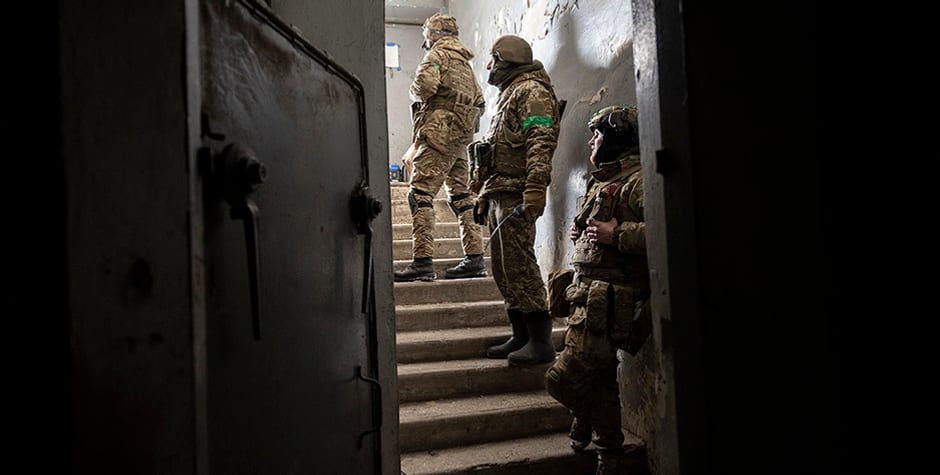War in Ukraine Still Rages One Year Later – What You Need To Know
February 24 marks the one-year anniversary of Russia’s unprovoked and illegal invasion of Ukraine. If Vladimir Putin thought the world would shrug and look the other way, he was wrong. Other than Iran, China, and North Korea—the world has roundly condemned Russia. If Putin’s goal was to divide and weaken NATO, he was profoundly wrong. Not only have NATO members supplied Ukraine with weapons to defend itself and stall Russia’s invasion, but also NATO is larger and stronger than ever—a direct result of Putin’s actions.
The ultimate outcome of this war is still unknown. But one year ago, military experts and political leaders in the West predicted that Ukraine would fall in a matter of days. The United States offered Ukraine’s President Zelensky a ride out of the country. Zelensky famously replied that he didn’t need a ride—he needed ammunition. And the courage of Zelensky and the Ukrainian people has been remarkable. Against the odds, they have inflicted heavy casualties on the Russian military, kept their government intact, and the seat of government in Kyiv remains.
From a military perspective, Russia’s invasion has been an unmitigated disaster. Russia is using an estimated 97% of its army in the ongoing attack of its neighbor. The number of Russian soldiers killed and wounded is approximately 270,000. Putin called up 300,000 reservists to backfill his army’s lost personnel. Short on soldiers, he is using mercenaries through the Russian-based Wagner Group and deploying high-value Russian airborne forces to sustain the advances Russian forces have made in eastern Ukraine.
According to the Institute for the Study of War (ISW), the Russian Ministry of Defense is reportedly also using convicts in the fight and—like the Wagner Group—is using them as cannon fodder. Russian forces are ordered into battle often with limited training and equipment and ordered to storm well-fortified Ukrainian defensive positions, resulting in heavy casualties and low morale. Thousands of citizens in Russia have risked arrest and prison to protest the war. Putin has hired and fired multiple general officers in his quest for victory, with numerous generals killed in the conflict.
While it is not without controversy, the United States continues to send weapons and equipment to Ukraine. The Washington Post reported on February 13 that the Biden Administration will announce a new aid package next week. In a survey from the Associated Press, there is still bipartisan support among Americans for backing Ukraine. The support has diminished somewhat but still remains significant. The survey reveals 84% of Democrats are in favor of the U.S. playing at least “a minor role” in helping Ukraine defend itself, with 70% of Republicans who feel the same. Last May, that number was 94% for Democrats and 74% for Republicans. However, some officials in the U.S. have stated that the U.S. cannot continue to support Ukraine indefinitely.
In an interesting development, Defense One reports officials in the U.S. are considering sending Iranian weapons and ammunition to Ukraine. The weapons were captured as Iran attempted to ship them to their proxies in the Middle East. The Wall Street Journal reports the weapons cache includes 5,000 assault rifles, 1.6 million rounds of small arms ammunition, some anti-tank missiles, and other military supplies. Meanwhile, Iran has been supplying attack drones to Russia in the war.
Ukrainian officials believe Russia is planning a major offensive in the very near future. Russia is sending men and materials into eastern Ukraine. While Ukraine is better equipped than ever, many of the promised weapons—like M-1 Abrams tanks, for example—are months away from arriving in Ukraine. There is also the lag time required for Ukrainian personnel to be trained on many of the weapons systems supplied by the U.S. and Europe.
The war to defend Ukraine and defeat Russia has become a proxy war for the United States and its allies in Europe. There is always the risk of the war becoming a much wider conflict. History reminds us that the U.S. was drawn into two world wars by conflicts that began in Europe. Putin has hinted at using nuclear weapons in the war. That would be an alarming game-changer with an unpredictable response from the rest of the world.
Meanwhile, Russian forces flagrantly violate the Law of War with its attacks on civilian population centers, the rape and torture of people in territory Russia illegally occupies, and sending Ukrainian children away from their families and into Russia. Yet if the world allows Russia to invade a neighbor with impunity and commit these kinds of atrocities, it will send a troubling message to the aggressors in the world and become a significant loss of the systems and values that were established in the wake of World War II.
All this reminds us that there is evil in the world. That evil is personified in leaders like Vladimir Putin. The enemies of peace and freedom are real. There are nations, groups, and people who are a true threat to the safety and sanity we are inclined to take for granted. The price of freedom is eternal vigilance. And freedom is never free.
Support the work of the ACLJ as we continue to bring you expert analysis on the issues that matter most.

